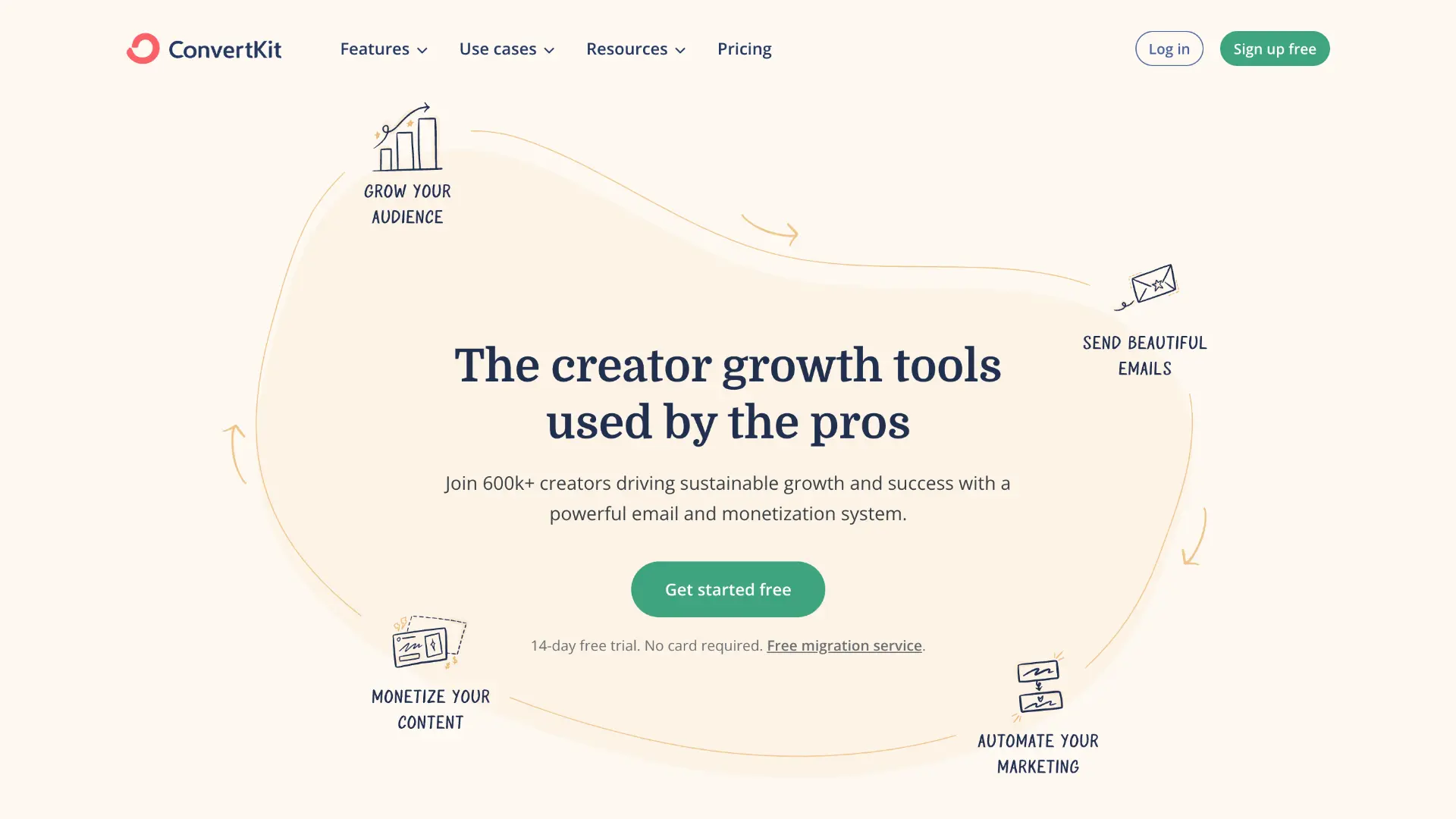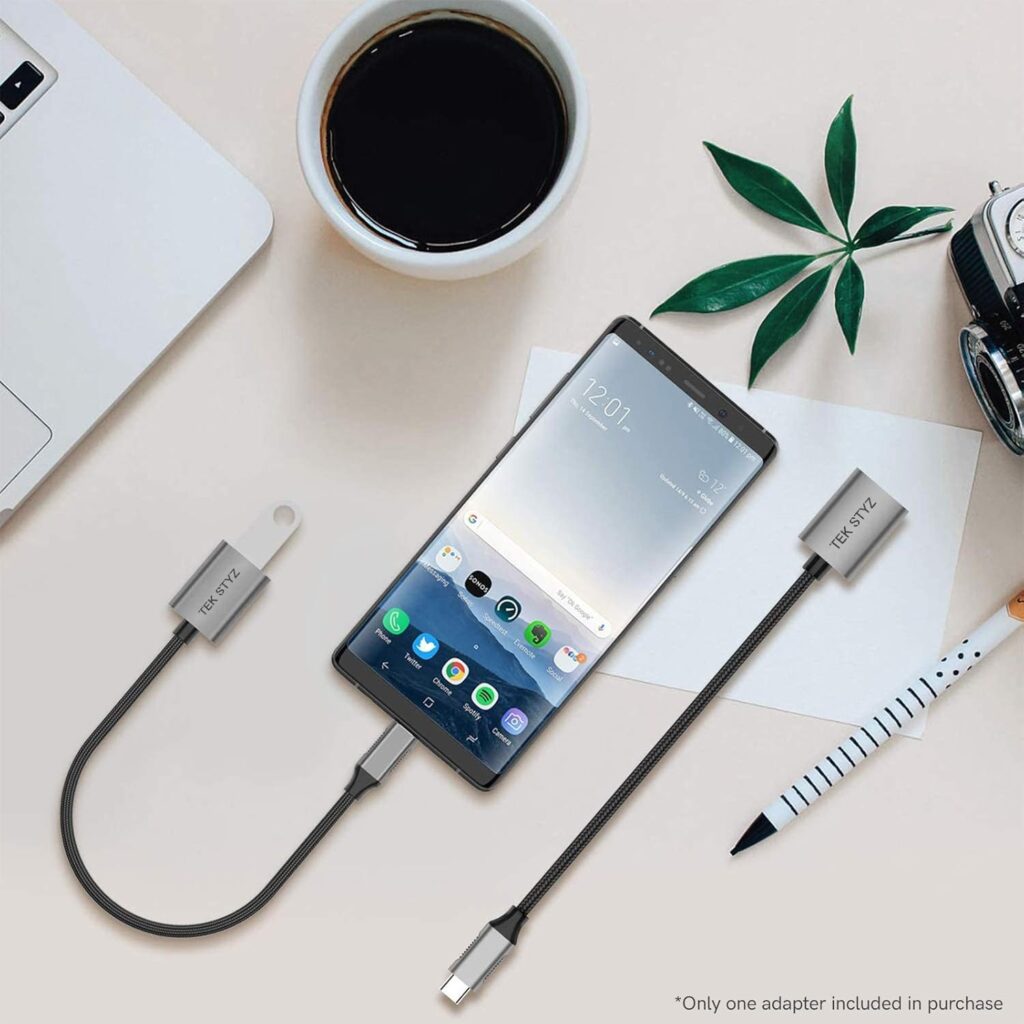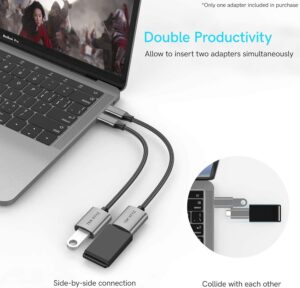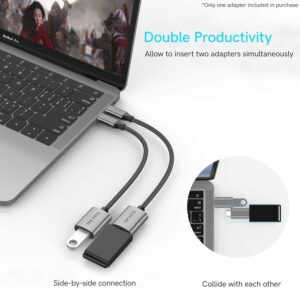ConvertKit vs. Drip: Which CRM Is Best for Creators?
Choose the best email marketing tool for creators with this in-depth comparison of ConvertKit and Drip, two powerful platforms tailored to engagement and growth.
Both ConvertKit and Drip offer extensive tools for email marketing and CRM. While ConvertKit is primarily aimed at creators like bloggers, YouTubers, and freelancers, Drip leans toward eCommerce businesses looking to engage customers with detailed, behavior-based automations. This comparison highlights the strengths and weaknesses of each, helping you decide which best fits your needs.
ConvertKit Overview
ConvertKit is an email marketing platform designed for creators and freelancers, emphasizing simplicity, personalization, and engagement. It offers automation, segmentation, and built-in product sales, making it easy for creators to connect with subscribers and grow their audience.
ConvertKit Pros
- User-Friendly Interface: ConvertKit’s interface is designed for beginners, allowing users to set up campaigns without technical expertise.
- Creator-Focused Features: Designed for creators, ConvertKit includes tools for segmentation, tagging, and monetizing content through digital product sales.
- Visual Automation Builder: Its intuitive builder makes setting up complex workflows easy, even for those new to automation.
ConvertKit Cons
- Limited eCommerce Integrations: ConvertKit’s eCommerce tools are basic compared to Drip, which may limit its use for larger online stores.
- Fewer Analytics Options: While sufficient for creators, ConvertKit’s analytics are less detailed than Drip’s, which offers more insights for optimizing campaigns.
Drip Overview
Drip is an advanced email marketing platform focused on eCommerce, offering detailed behavior-based automation, customizable workflows, and extensive integrations. Drip is ideal for brands needing sophisticated automations to track customer behavior and boost conversions.
Drip Pros
- Advanced Automation: Drip provides highly customizable workflows, making it perfect for eCommerce brands with complex sales funnels.
- Comprehensive Analytics: Drip’s analytics offer in-depth insights into campaign performance, allowing brands to refine their strategy based on data.
- Integrations with eCommerce Platforms: Drip integrates well with Shopify, WooCommerce, and other eCommerce tools, making it ideal for online businesses.
Drip Cons
- Steeper Learning Curve: Drip’s advanced features can be overwhelming for beginners or creators with basic email marketing needs.
- Pricing: Drip is generally more expensive than ConvertKit, especially for smaller creators who may not require all of its features.
Head-to-Head Feature Comparison
1. Ease of Use
- ConvertKit: User-friendly, with a focus on simplicity and an intuitive interface for creators and freelancers.
- Drip: More complex, designed for experienced users comfortable with detailed workflows and custom automations.
2. Automation Capabilities
- ConvertKit: Offers simple yet effective automations, including welcome series, tagging, and conditional content for personalization.
- Drip: Advanced automations with extensive behavioral triggers, ideal for eCommerce brands needing multi-step sales funnels.
3. Audience Segmentation
- ConvertKit: Allows for easy tagging and segmentation, suitable for creators looking to organize subscribers by interest or actions.
- Drip: Provides detailed segmentation options based on behavior, purchases, and engagement, offering more granular control for eCommerce.
4. eCommerce Integrations
- ConvertKit: Basic eCommerce tools for product sales; limited integrations compared to Drip.
- Drip: Extensive integrations with popular eCommerce platforms like Shopify and WooCommerce, making it ideal for online stores.
5. Pricing
- ConvertKit: Lower-cost plans for creators with simple needs, making it a budget-friendly option for freelancers and small businesses.
- Drip: More expensive but offers greater value for eCommerce businesses needing advanced automation and analytics.
When to Choose ConvertKit
ConvertKit is best for content creators, freelancers, and small businesses looking to connect with their audience and monetize content. If your focus is building an engaged community, nurturing subscribers, and selling digital products, ConvertKit’s ease of use and creator-focused tools are a great fit.
When to Choose Drip
Drip is ideal for eCommerce brands and larger businesses with complex sales funnels and advanced automation needs. If you require extensive eCommerce integrations, behavior-based segmentation, and detailed analytics to optimize sales, Drip offers a suite of features that can support these needs effectively.
Conclusion
ConvertKit and Drip both have their strengths, but they cater to different user bases. ConvertKit excels for creators and freelancers needing straightforward email tools, while Drip’s advanced features make it a powerful choice for eCommerce brands with more sophisticated needs.
FAQs
What is the main difference between ConvertKit and Drip?
ConvertKit is designed for content creators, focusing on ease of use and engagement tools, while Drip targets eCommerce businesses with advanced automation and behavioral tracking.
Which platform offers better automation?
Drip offers more advanced automation capabilities, including behavior-based triggers and complex workflows. ConvertKit’s automation is simpler but effective for most creator needs.
Is ConvertKit suitable for eCommerce?
ConvertKit has basic eCommerce tools, making it suitable for creators selling digital products. However, Drip’s integrations are better suited for larger eCommerce stores.
Which is more affordable, ConvertKit or Drip?
ConvertKit is generally more affordable, particularly for small creators and freelancers. Drip’s pricing is higher but reflects its advanced features for eCommerce businesses.
Can I switch from ConvertKit to Drip later?
Yes, you can switch platforms. However, it’s recommended to assess your needs before committing to a platform, as switching can require time and adjustments.
Top Tools to Simplify and Scale Your Business
- ConvertKit: Simple, creator-friendly email marketing platform with monetization options and automation.
- Drip: Advanced CRM and email marketing platform for eCommerce brands with robust automation.
- ActiveCampaign: Email and CRM tool with automation, suitable for businesses needing comprehensive engagement.
- MailerLite: Affordable email marketing platform with automation, ideal for beginners.
- HubSpot: All-in-one CRM with email marketing and customer analytics, suitable for growing businesses.
Keywords: ConvertKit vs Drip, email marketing for creators, eCommerce email automation, ConvertKit vs Drip comparison, email marketing tools, behavior-based automation










